Essential Guide to LED Bulb Disposal Practices
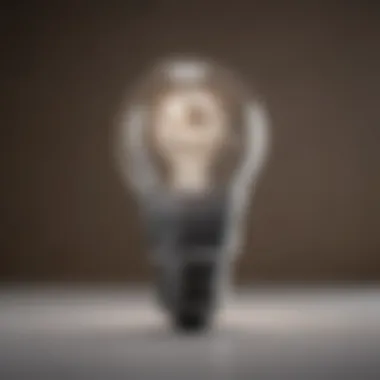
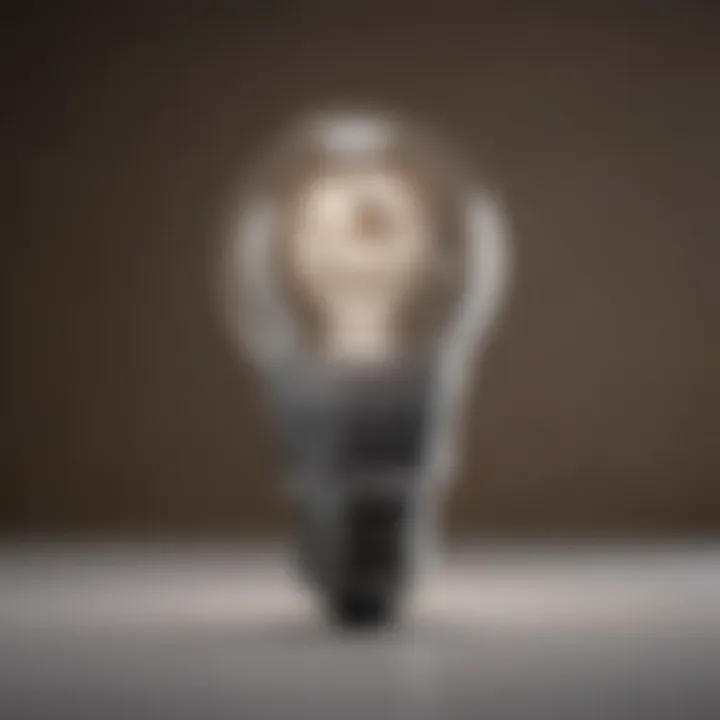
Overview of the Topic
Preface to Key Environmental Concern
In today's world, where technology meets sustainability, the improper disposal of LED bulbs has risen to become a significant environmental concern. LED bulbs, known for their long lifespan and energy efficiency, often end up in landfills or are discarded carelessly, leading to potential hazards. While these bulbs have transformed the way we light our homes, their end-of-life management is just as crucial as their energy-saving capabilities.
Background Information on the Significance of the Topic
Why should we pay attention to how we dispose of these lighting marvels? The answer lies in the materials that make up LED bulbs. They contain trace amounts of substances like lead and arsenic, which can be harmful to both the environment and human health if released into the soil and water. Understanding the repercussions of neglecting proper disposal methods can lead us closer to sustainable practices that protect our ecosystems and communities.
Current Status and Challenges
Examination of the Current State
As of recent studies, it is estimated that a significant number of LED bulbs are improperly disposed of every year. In a society that encourages convenience, many individuals are unaware of the proper recycling options available to them. This lack of awareness fosters bad habits surrounding waste management, thus escalating the environmental impact.
Identification of Challenges and Threats Facing the Topic
The primary challenges in disposing of LED bulbs stem from the lax regulations surrounding their disposal. In many regions, recycling facilities may not be adequately equipped to handle LED bulbs, making it difficult for consumers to dispose of them responsibly. Additionally, misinformation about the risks associated with improper disposal further complicates the situation. Without proper guidance and resources, the cycle of inappropriate disposal continues.
Sustainable Solutions
Exploration of Sustainable Practices
Fortunately, steps can be taken to address the shortcomings in LED bulb disposal. Recycling is the best way to ensure that potentially hazardous materials are managed properly.
- Many local municipalities have designated drop-off locations for these bulbs.
- Retailers like Home Depot and Lowe's have established recycling programs for consumers.
- Specialized e-waste recycling centers often accept LED bulbs, safely breaking them down into reusable components.
By promoting and participating in these provide options, we can lessen the environmental impact of discarded bulbs significantly.
Showcase of Successful Examples
Take the case of Sweden, a country renowned for its waste management strategies. In Sweden, a substantial percentage of LED bulbs are recycled, thanks to well-established systems and public awareness campaigns. This not only reduces environmental strain but also reinforces the idea of a circular economy where materials are reused and repurposed.
Impact and Importance
Analysis of the Impact on Ecosystems
The improper disposal of LED bulbs can lead to contamination of soil and water, posing risks not only to wildlife but also to human health. The accumulation of toxic substances in the food chain results in long-term consequences for ecosystems and biodiversity.
Emphasis on Conservation Efforts
Developing a culture of responsibility around LED bulb disposal is imperative for the future. By engaging in proper practices, we contribute to conservation efforts and the health of our planet. Awareness and education about recycling options empower individuals and businesses, encouraging them to take part in responsible waste management.
"We must act now to ensure that our actions today do not dictate the extinction of our tomorrow."
Understanding LED Bulbs
Understanding LED bulbs is vital for anyone looking to actively participate in sustainable practices. Light-emitting diodes (LEDs) have captured the attention of conservationists, students, and environmentalists alike. This section lays down the foundation for understanding what makes LED bulbs significant not just in our homes but in the larger scope of environmental stewardship.
As technology advances, so does the way we illuminate our spaces. Knowing the specifics of LED bulbs can lead to informed choices about not only their use but also their disposal when the time comes.
What are LED Bulbs?
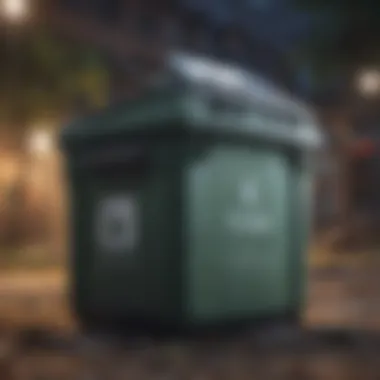
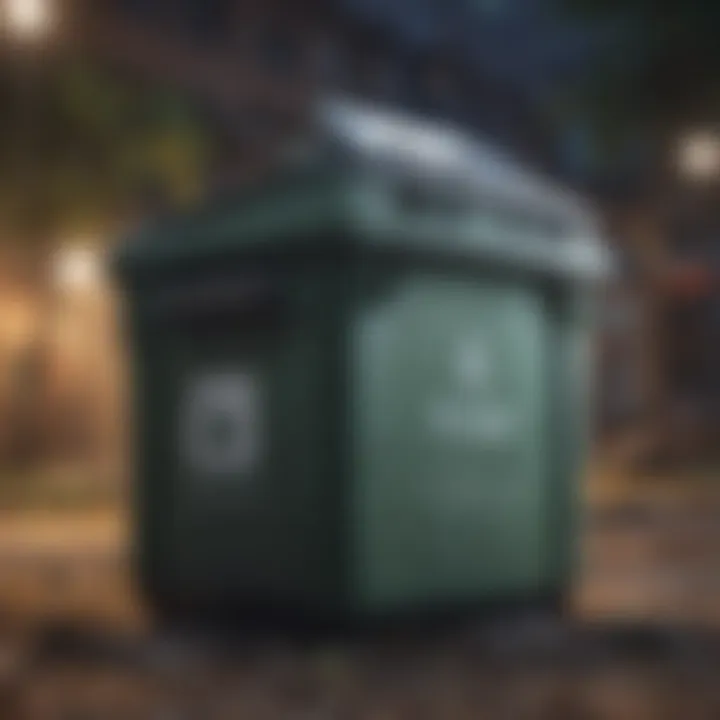
LED bulbs are not just mere replacements for incandescent or compact fluorescent lights; they represent a shift in how energy consumption is viewed. At their core, LED bulbs use a semiconductor to convert electricity into light. This technology offers myriad benefits, such as lower energy intake and a longer life span. In most cases, they use about 75% less energy compared to traditional bulbs. This energy efficiency is crucial, given the increasing global focus on reducing carbon emissions. Understanding LED bulbs essentially boils down to grasping how they operate and why they are more beneficial in the long run.
Components of LED Bulbs
The make-up of LED bulbs is relatively simple. The key components include:
- Diode: This is where the magic happens— electrical current passes through a diode, emitting light.
- Heat Sink: LED bulbs can generate heat, so a heat sink helps dissipate that heat, enabling them to sustain longer durations without burnout.
- Lens: The lens helps focus the light and can impact the bulb's brightness and spread.
These elements work together to create a lighting source that not only lasts longer but is also more energy-efficient than its incandescent and fluorescent counterparts. When you understand these components, you appreciate the engineering that goes into designing an LED bulb and its role in energy conservation.
Benefits of LED Lighting
Switching to LED lighting comes with many advantages. Here are a few that stand out:
- Energy Efficiency: As earlier mentioned, LED bulbs consume significantly less power. This leads to lower electricity bills, allowing you to save money.
- Long Lifespan: Most LED bulbs last around 15,000 to 50,000 hours, vastly exceeding the life of traditional options.
- Durability: LED bulbs are solid-state lighting sources, meaning they are more resistant to breakage compared to glass bulbs.
"A switch to LEDs can reduce your energy consumption for lighting by 50% or more," making a considerable impact on your environmental footprint.
In sum, understanding LED bulbs provides the groundwork for responsible usage and disposal, which are critical as we navigate the complexities of modern waste management. Their advantages highlight their necessity in today's energy-conscious world. By arming ourselves with knowledge, we can make choices that reverberate positively throughout the ecosystem.
The Problem with LED Bulb Disposal
The disposal of LED bulbs presents several challenges that directly impact not only the environment but also public health. As LED technology has become prevalent, the concern surrounding its end-of-life phase has grown simultaneously. This section delves into the critical considerations one must keep in mind while disposing of these bulbs, emphasizing both environmental degradation and potential health risks.
Environmental Impact
Disposing of LED bulbs improperly can have a serious impact on our environment. One of the significant components within these bulbs is phosphor, a unique substance essential for producing light. When these bulbs end up in landfills, phosphor can leach into the soil and groundwater, leading to contamination.
Additionally, LED bulbs may contain trace amounts of heavy metals such as lead and arsenic. If irresponsibly discarded, these toxic substances could contribute to long-lasting pollution. Even though the lifespan of LEDs is much longer than traditional incandescent bulbs, when they do reach the end of their life, it’s vital to ensure they’re disposed of properly in order to reduce their environmental footprint.
"An LED bulb might shine bright, but its improper disposal can dim the future of our planet."
The environmental implications of poor disposal practices affect not just local ecosystems but can also lead to broader, systemic issues, such as inflated waste management costs and challenges in sustainable urban development. Therefore, recognizing the environmental impact serves as a first step towards adopting responsible disposal practices.
Health Risks of Improper Disposal
Improperly handled LED bulbs pose health risks, primarily attributable to the hazardous materials they occasionally contain. When these bulbs are broken, either during disposal or otherwise, they can release hazardous substances into the air, posing respiratory risks. For those individuals untrained or unaware of the dangers, exposure can lead to more severe health complications in the long run.
One report highlighted that the inhalation of particles from broken LEDs could mimic symptoms seen in individuals exposed to common household pollutants. It's crucial for individuals to realize that their personal safety extends to their disposal habits as well.
To put it succinctly, here are a few risks associated with negligent disposal of LED bulbs:
- Pollutants in the Air: Broken bulbs can release harmful particles that may affect indoor and outdoor air quality.
- Chemical Exposure: Touching shattered LED remnants can risk direct exposure to heavy metals, leading to various health issues.
- Public Health Costs: If these health risks become widespread due to careless disposal, it could lead to increased public health initiatives, straining local resources.
Each of these risks is compounded by a lack of awareness about the proper methods for disposing of LED lights. By understanding both the environmental and health risks associated with improper disposal, individuals and communities can better appreciate the importance of following designated disposal guidelines.
Legal Framework for LED Bulb Disposal
The legal framework guiding the disposal of LED bulbs plays a crucial role in shaping responsible environmental behaviors. With the growing popularity of LED lighting, it’s important to recognize that these energy-efficient devices can pose environmental hazards if not disposed of properly. Understanding the laws and regulations behind LED bulb disposal is necessary not just for compliance, but for actively taking part in sustainable practices.
Regulatory Bodies Involved
Several key organizations are essential in ensuring that LED bulb disposal aligns with environmental preservation goals. In the United States, the Environmental Protection Agency (EPA) is primarily responsible for overseeing waste management, including the proper disposal of hazardous materials found in items like LED bulbs. The EPA provides guidelines that outline how to handle these products in the waste stream.
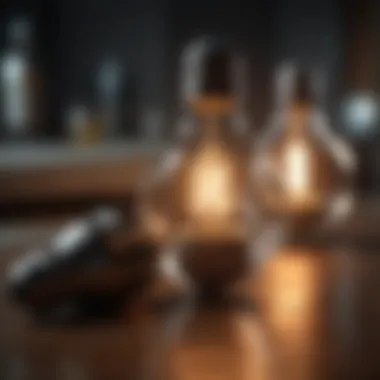

Additionally, state and local agencies have regulations that often elaborate on EPA guidelines, tailored to local ecosystems and communities. For instance, in California, the Department of Resources Recycling and Recovery (CalRecycle) has specific protocols regarding the recycling and disposal of LEDs, which are mandated in order to mitigate pollution risks.
Most regions will have their own environmental agencies, so it’s wise to familiarize oneself with local laws. By knowing which agencies oversee bulb disposal and how they enforce regulations, individuals and businesses can ensure they are disposing of bulbs in a manner that does not harm the environment.
Legislation on Waste Management
In terms of legislation, several acts facilitate proper waste management, which encompasses LED bulb disposal. The Resource Conservation and Recovery Act (RCRA) governs how hazardous waste is managed, impacting how LED bulbs are classified and treated at the end of their life cycle.
LED bulbs often contain trace amounts of hazardous materials, such as lead and arsenic, necessitating careful handling. In many jurisdictions, there are specific laws against placing these bulbs in regular trash bins. This is where legislation like the RCRA comes into play, making it illegal to dispose of certain types of waste without following strict guidelines. States like New York have enacted laws that require the recycling of incandescent and fluorescent bulbs, which can serve as templates for similar measures regarding LEDs.
Here’s a look at some essential aspects of relevant legislations:
- Classification of Waste: States often define what constitutes hazardous waste, which can include LED bulbs due to their material content.
- Mandatory Recycling Programs: Some areas mandate that all waste facilities must accept LED bulbs for recycling, underscoring the emphasis on turning waste into reusable materials.
- Reporting Requirements: Businesses might face legal obligations to track how they dispose of hazardous items, thereby fostering greater accountability.
"Understanding the legal framework is essential for environmentally conscious disposal and compliance with regulations."
By navigating through the complexities of the legal landscape, stakeholders can protect both public health and the environment from the adverse effects of improper LED bulb disposal.
Best Practices for LED Bulb Disposal
Proper disposal of LED bulbs is a matter of significance for both environmental health and public safety. As the demand for LED lighting increases, so does the necessity for sensible disposal methods. Understanding the best practices not only aids in reducing potential hazards but also encourages responsible consumer behavior. More than just a trend, adhering to these practices aligns with community efforts to minimize waste and protect natural resources.
Recycling Options
Recycling offers a practical avenue for disposing of LED bulbs, aiding in the recovery of valuable materials while minimizing landfill waste. Opting for recycling means you’re contributing to a circular economy—a system where materials are reused, repaired, or recycled, creating a more sustainable environment. Many components of LED bulbs, such as aluminum and copper, can be reclaimed and repurposed.
To navigate this process, consider the following options:
- Local Recycling Centers: Many areas have dedicated facilities that accept LED bulbs. These centers often partner with larger recycling organizations to ensure specialized handling of electronic waste.
- Retail Take-back Programs: Numerous retail outlets, like Home Depot and Lowe’s, are increasingly providing recycling bins specifically for LED bulbs. Check if your nearby stores participate in these initiatives.
- Community Events: Some communities host periodic collection events where residents can bring their used electronic waste, including LED bulbs, for proper disposal. Local environmental groups may organize these events to raise awareness and promote recycling.
Drop-off Locations
Finding the right drop-off location can make the disposal process easier. Many municipalities and private organizations have set up designated sites for bin collection or drop-off specifically for LED bulbs. Here’s how to find them:
- Check Local Guidelines: Your city or county website usually provides a disposal guide, listing where LED bulbs can be taken for recycling. If not, contacting local waste management can yield the necessary information.
- Eco-Friendly Stores: As mentioned before, certain home improvement stores offer drop-off locations for used bulbs. It’s worthwhile to keep a list of nearby stores that take back LED products.
- Search Online: Utilize resources like earth911.com, where you can enter your zip code to find the nearest recycling center.
"Disposal isn’t just about throwing things away; it’s about ensuring that resources are managed responsibly and sustainably for future generations."
Manufacturer Take-Back Programs
Many LED manufacturers have recognized the importance of responsible disposal and initiated take-back programs. These programs are designed to simplify the recycling process for consumers while ensuring that the used products are disposed of properly. Here are the advantages and considerations:
- Convenience: These programs often allow consumers to return old bulbs directly to the manufacturer, making disposal straightforward and efficient.
- Incentives: Some businesses might offer incentives such as discounts on future purchases for returning old products, which encourages environmentally responsible behavior.
- Transparency: Participating in manufacturer programs enables consumers to know how their disposed items will be handled and recycled, fostering trust in the brand’s commitment to sustainability.
In sum, applying these best practices facilitates proper LED bulb disposal, promoting communal responsibility and caring for our environment. Consumers have the power to make indelible changes when they choose sustainable disposal methods. By recycling, utilizing drop-off locations, and participating in manufacturer take-back programs, everyone can play a part in protecting our planet.
DIY Solutions for LED Bulb Disposal
Understanding DIY solutions for LED bulb disposal is essential for environmental conservation and responsible waste management. These solutions empower individuals to take action, reducing the ecological footprint left behind by improper disposal methods. By adopting simple DIY practices, we minimize waste, save energy, and teach others about the importance of sustainable living. Moreover, these approaches can be creatively fulfilling and educational.
Safe Handling Procedures
When it comes to handling LED bulbs, it's essential to remember that safety is no accident. These bulbs, while energy-efficient, can still pose risks if broken. Here are important tips to keep in mind:
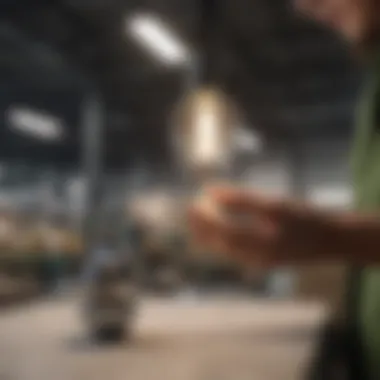
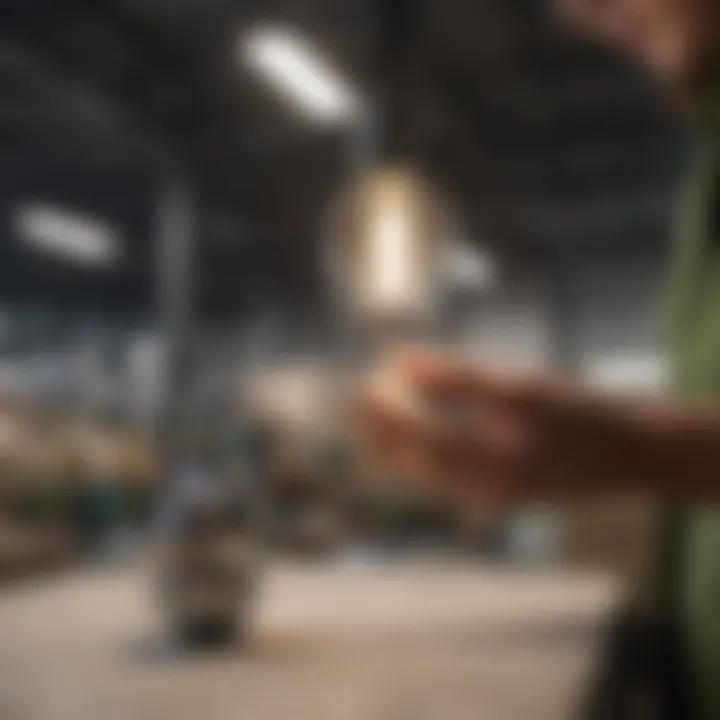
- Work in a well-lit area: Make sure the space is bright enough to prevent accidents due to low visibility.
- Wear protective gear: Use gloves and safety glasses to protect your hands and eyes. Such precautions are especially important if the bulb breaks.
- Use a cloth or paper towel to grab the bulb: Instead of bare hands, wrap a cloth around the bulb for better grip and protection, particularly if you’re removing or handling an old one.
- Avoid throwing bulbs in regular trash: This seems intuitive, but many overlook it. Clearly separate old bulbs to adhere to disposal regulations.
"Proper handling ensures we protect not just ourselves but the environment from hazardous materials that may leak into the soil or water."
Repurposing Old LED Bulbs
Quite often, LED bulbs that have outlived their useful life can be given a new purpose rather than just being discarded. Repurposing not only offers an exciting challenge but also emphasizes resourcefulness, which is critical for sustainability. Here are some creative ideas for turning those old bulbs into something useful:
- DIY Lighting Fixtures: Turn a few old bulbs into artistic ceiling or pendant lights. With the right materials and a little creativity, you can have a stunning centerpiece in your home.
- Planters: LEDs make for imaginative planters. Cut the base, fill with soil, and use them for small succulents, giving a quirky twist to your indoor garden.
- Decorative Vases: Clean and transform them into unique vases for dried flowers or as holders for small items.
- Craft Projects: Kids’ crafts or school projects might also be an avenue to inspire creativity while teaching eco-friendly values.
Finding innovative uses for old LED bulbs encourages community dialogue about reducing waste and leveraging creativity for positive environmental impact.
Public Awareness and Community Initiatives
Raising awareness about the proper disposal of LED bulbs is crucial in fostering a culture of environmental stewardship. It’s not just about individuals; community initiatives play a significant role in shaping public perception and encouraging responsible behavior. When communities come together, they amplify their voice, sharing knowledge and resources that can lead to impactful changes in waste management practices. Educated citizens are more likely to take proactive steps that benefit both the environment and public health.
For many, the details about LED bulb disposal may not be top of mind. However, educating the public about the unique challenges associated with LED waste is essential. Many might not realize that these bulbs contain small amounts of hazardous materials, like lead or phosphor, which can leach into the environment if disposed of improperly. Therefore, increasing awareness helps mitigate potential risks while promoting sustainable habits.
"A well-informed community can significantly alter the landscape of environmental impact through individual actions.”
Educational Campaigns
Educational campaigns are instrumental in spreading the word about the significance of proper LED bulb disposal. These campaigns often target schools, community centers, and local businesses. The idea is to foster knowledge about the environmental impact of improper disposal, alongside practical steps for responsible treatment of these items.
Effective campaigns utilize a variety of media, including flyers, workshops, and even social media platforms like Facebook and Reddit, to reach diverse audiences. Collaborations with local influencers or environmental organizations can further amplify messages. For example, a neighborhood event could include free workshops explaining how to handle old bulbs.
Some key benefits of these campaigns include:
- Increased Knowledge: People learn the right ways to recycle or dispose of LED bulbs and understand the risks involved in neglecting this aspect.
- Community Engagement: Such initiatives foster a sense of unity by bringing people together for a common cause.
- Resource Sharing: Information on local recycling sites or take-back programs can be easily circulated, creating a handy resource network.
Local Community Efforts
Local community efforts can take many forms and are often the backbone of successful awareness-raising initiatives. Many neighborhoods have seen a rise in local groups aimed at improving waste management practices, particularly focusing on hazardous waste.
Whether through clean-up drives or designated recycling days, local efforts serve to educate and engage residents directly. Organizing events where residents can drop off LED bulbs for recycling encourages participation and cultivates a sense of responsibility among community members.
Some examples of local initiatives include:
- Organizing recycling fairs, where citizens can learn not only about LED bulb disposal but also about other sustainable practices.
- Collaborating with local waste management services to ensure accessible disposal options are readily available for everyone.
- Hosting informational sessions on the health and environmental risks posed by improper disposal, facilitated by experts in waste management or environmental science.
As communities continue to grow in awareness, the collective effort leads to a more informed and responsible populace. It creates a ripple effect, where knowledge and action spread organically, leading to real change.
Future of LED Bulb Disposal
Understanding the future of LED bulb disposal is essential, especially given the rapid pace at which technology is advancing and the increasing global focus on sustainability. As more households and businesses shift to LED lighting, the question of what to do with these bulbs when they reach the end of their life cycle becomes crucial. This section delves into the innovative trends and technological advancements that promise to enhance waste management regarding LED bulbs, thereby fostering a greener future.
Trends in Waste Management
The landscape of waste management is evolving. Traditionally, disposal practices have often been reactive rather than proactive. However, new trends emphasize reducing waste at the source, advocating for circular economies, and improving recycling techniques.
- Decentralized Recycling Initiatives:
Many cities are promoting smaller, localized recycling centers. This aims to make it more convenient for residents to properly dispose of LED bulbs. Such measures can lead to higher recycling rates as barriers for citizens are lowered. - Public-Private Partnerships:
Collaboration between government agencies and private companies increasingly facilitates the enhancement of recycling systems. Innovative programs that offer incentives for recycling LED bulbs can engage community members effectively. - Consumer Awareness Campaigns:
Educational campaigns emphasizing the environmental impacts of improper disposal aim to instill a sense of responsibility among consumers. Increased awareness can lead to more conscientious decisions regarding light bulb disposal. - Legislation and Funding for Recycling Programs:
Some governments are allocating funds specifically for recycling initiatives. These programs can develop more effective methods for managing electronic waste.
These trends not only promote better practices but they also foster a culture of sustainability within communities. By shifting attitudes about waste, we can expect to see significant improvements in how LED bulbs and other electronic products are managed in the future.
Technological Innovations
Technology is at the forefront of revolutionizing disposal practices. As the demand for eco-friendly solutions continues to rise, innovative approaches emerge. Here are some notable advancements:
- Advanced Sorting Technologies:
Sorting facilities are now using AI-powered systems to identify and separate materials quickly. This reduces contamination risks and boosts the efficiency of recycling efforts. - New Recycling Techniques:
Techniques such as hydrometallurgy and pyrometallurgy are being explored to recover valuable metals from old LED bulbs. Such methods can yield economic benefits while minimizing landfill contributions. - Development of Biodegradable Options:
Researchers are exploring materials that could replace traditional LED components, aiming to make more sustainable lighting options. This shift may eliminate many disposal issues associated with current technologies. - Mobile Apps for Disposal:
There are now apps designed to help consumers locate proper disposal sites for LED bulbs based on their location. Such technology simplifies the process, encouraging individuals to recycle responsibly.
"The future hinges on how we choose to deal with the waste of today."
By adapting to these insights, both individuals and communities can navigate the complexities of LED bulb disposal effectively.



